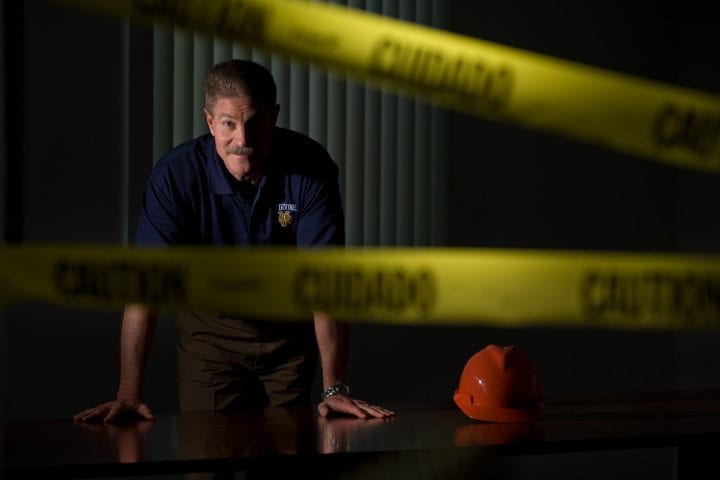Zen and the art of workplace safety
Accidents among UCI employees have been on the decline for years, and in 2010 the campus had the lowest number of workers’ compensation claims in the University of California system.

When Marc Gomez enthuses about “being in the moment,” he sounds more like a student of Eastern philosophy than one of UC Irvine’s principal purveyors of safety policies and practices.
“The main thing that causes accidents is inattention, a lack of mindfulness about one’s circumstances and surroundings,” he says. “Workplace safety is a state of mind.”
Gomez, interim assistant vice chancellor for Facilities Management and Environmental Health & Safety, is one of the driving forces behind the campus’s award-winning workplace safety program.
Other “risk partners,” as he refers to them, include people in Human Resources, Campus Recreation, Materiel & Risk Management and the UCI Police Department, as well as a cadre of EH&S coordinators across campus.
Safety is a shared responsibility, Gomez notes, ultimately involving every faculty and staff member. Simply paying attention helps reduce the three types of injuries reported most often on campus: those related to slips, trips and falls; lifting and carrying; and office ergonomics.
Accidents among UCI employees have been on the decline for years, and in 2010 the campus had the lowest number of workers’ compensation claims in the University of California system: 14 per 1,000 employees – 46 percent fewer than the average for other UC schools.
In addition, UCI has been recognized by the UC Office of the President in each of the past three years for having the best workers’ compensation rate among all UC campuses. The rate varies, but this year, for each $100 in employee salaries, UCI pays just 38 cents into a UC-managed self-insurance fund.
The campus logged a 53 percent reduction in workers’ compensation premiums between 2004 and 2011, and its rate is 40 percent lower than the UC system average. Had UCI paid the average of what other campuses did, it would have spent $23.5 million more on workers’ compensation over the past six years.
These results helped UCI capture the UC President’s Award for Excellence in EH&S in 2005, 2006, 2008 and 2010.
UCI’s safety record is no accident, says Wendell Brase, vice chancellor for Administrative & Business Services. The campus’s wide-ranging efforts to prevent workplace injuries include required safety training for all employees, the provision of safety equipment, safety awareness programs, ergonomic evaluations, and wellness programs that encourage employee fitness and health.
The school actively evaluates mishaps and translates findings into shared lessons learned. It also works closely with injured employees to help them obtain medical treatment and return to their duties as soon as possible.
“The dollar savings are significant and important to the campus in this fiscal environment, but more importantly, we want our employees to be safe, fit, healthy and productive,” Brase says.
“The data clearly demonstrate that our workers ‘get it.’ Safety is part of the UCI culture, and our employees and supervisors have shown that it’s just as much about values and attitudes as it is the tools and practices we utilize to work securely.”
That doesn’t mean it’s time to cross safety off the to-do list. Experts believe there are very few freak accidents and that nearly every workplace mishap follows a pattern of near-misses often unrecognized as accident precursors.
Given increased workloads, it’s more important than ever for employees to identify workplace hazards, discuss them in staff meetings, and pursue training before undertaking risky procedures, Gomez says.
Workers who haven’t already done so, he adds, should take the safety self-assessment offered online through the UC Learning Center to determine what training is required to safely perform their jobs.
Start with that, Gomez says, and “stay in the moment.”
